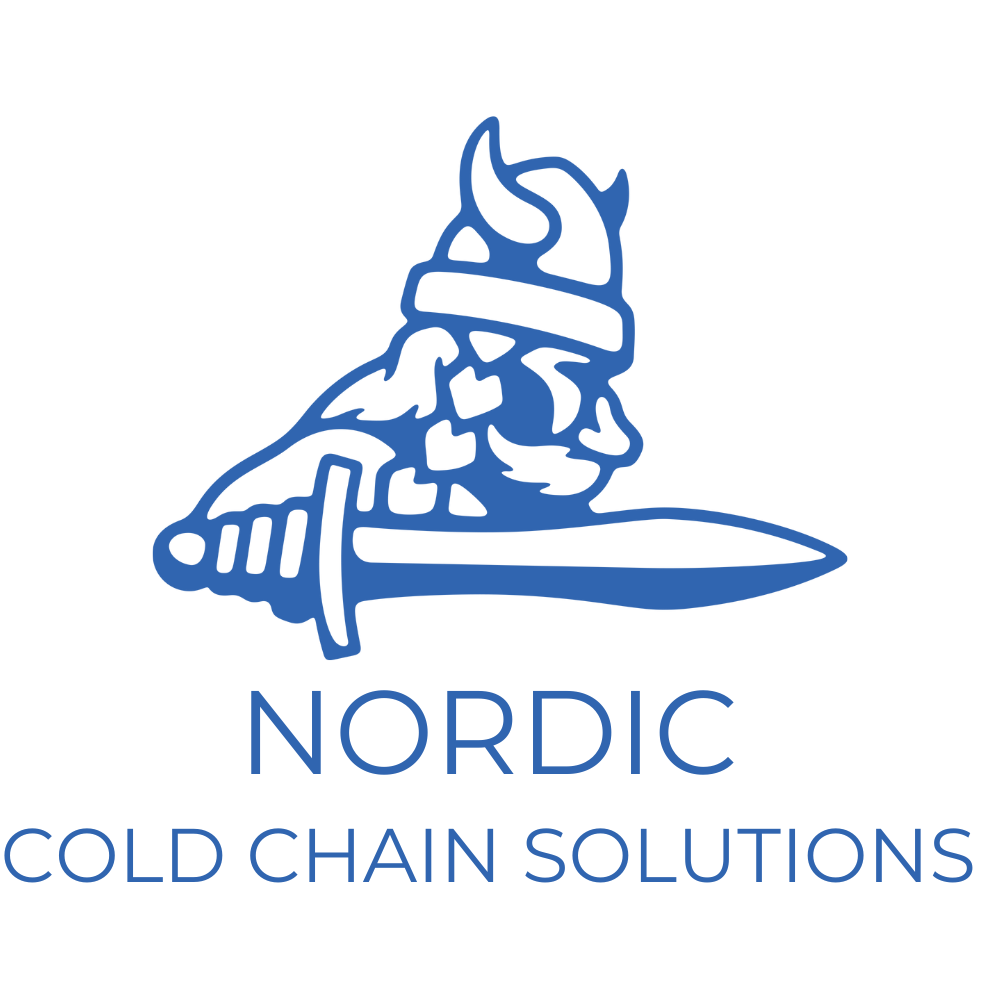Maintaining temperature stability is one of the most critical factors in protecting product integrity during transit. Gel packs have long been used as a thermal solution, but their limitations become clear in today’s complex logistics networks. Extended international routes, regulatory requirements in specialty pharmacy, and the growing value of temperature-sensitive shipments demand performance that goes beyond short-haul reliability. A single lapse in consistency can lead to costly spoilage, compliance issues, and risks to patient or consumer safety.
Nordic Ice® Bricks answer this challenge with a semi-rigid design that preserves shape and performance through freezing, thawing, and transportation. By holding packout configurations steady, maximizing space efficiency, and sustaining effectiveness during long-haul distribution, they deliver reliability that gel packs cannot match. This makes them an indispensable solution for industries ranging from pharmaceuticals and specialty pharmacy to frozen foods and beauty products, where uncompromised thermal protection is essential.
The Limits of Gel Packs in Modern Cold Chain Logistics
For decades, gel packs have been the default refrigerant in cold chain packaging. Their flexibility and accessibility made them a cost-effective solution for maintaining temperature ranges across short-haul distribution. Yet as shipping models grow more complex and high-value products move across global networks, the shortcomings of gel packs have become clear.
Shape instability during transit
Gel packs often lose their original form once frozen and thawed. This instability leads to packout shifting, uneven thermal contact, and in some cases, puncturing of packaging materials.
Inconsistent surface coverage
Because gel packs soften and shift, they can create hot and cold spots inside a container. Temperature-sensitive products that rely on even surface contact may be exposed to fluctuations that compromise their quality.
Space inefficiency
In high-volume or long-distance shipping, maximizing payload capacity is critical. Gel packs’ irregularity and susceptibility to deformation often create void space within containers, reducing efficiency and increasing shipping costs.
Performance limitations in long transit
While suitable for short deliveries, gel packs can struggle to maintain reliable performance during international or cross-country transport, where extended thermal protection is essential.
The result is a growing demand for refrigerant technologies designed to eliminate these vulnerabilities and deliver thermal stability that keeps pace with modern logistics.
Nordic Ice® Bricks: Redefining Thermal Stability

Nordic Ice® Bricks address these challenges head-on with a design rooted in precision and durability. Unlike gel packs, these refrigerants are semi-rigid foam bricks that maintain their shape during all phases of the shipping cycle. This structural integrity ensures packouts remain consistent from the warehouse floor to the customer’s hands.
Each brick is injected with a carefully measured volume of coolant and vacuum-sealed to lock in performance. This process not only guarantees consistent weight and thermal capacity but also eliminates variability that could compromise critical shipments.
Key benefits of Nordic Ice® Bricks include:
- Predictable packout performance: By holding their shape, bricks prevent shifting, slumping, or product exposure during transit.
- Space efficiency: The rigid format reduces void space, allowing for denser, more cost-efficient shipping configurations.
- Longevity in demanding conditions: Bricks excel in long-haul scenarios, ensuring reliable performance over extended transit times.
- Versatility across temperature ranges: From ambient protection to frozen environments, bricks adapt to diverse shipping needs.
For industries managing sensitive pharmaceuticals, frozen foods, or luxury beauty items, this combination of durability and thermal control establishes a higher standard of protection.
Reliability Where It Matters Most: Specialty Pharmacy
Few industries face thermal control challenges as critical as specialty pharmacy. These high-value medications often require strict storage ranges and must remain uncompromised through every mile of distribution. A single deviation can result in significant financial losses, regulatory complications, and risks to patient safety.
Why gel packs fall short in specialty pharmacy:
- Variability in shape and contact creates risk of localized hot spots.
- Extended shipping cycles demand refrigerants with proven endurance.
- Pharmacies must demonstrate compliance with URAC standards, which emphasize reliability and accountability.
How Nordic Ice® Bricks provide a safeguard:
- Thermal consistency: The rigid structure ensures full and even surface contact, eliminating thermal gaps.
- Compliance support: Bricks provide a more dependable thermal profile, helping pharmacies meet URAC accreditation requirements.
- Patient-first reliability: By protecting medication integrity, bricks reduce the risk of treatment delays, adverse outcomes, and reputational harm.
Specialty pharmacies increasingly view bricks not just as packaging components but as integral safeguards in their patient-care mission.
Sustaining Long-Haul Shipments
Global supply chains and cross-country shipping place unprecedented demands on cold chain packaging. Gel packs, while useful for local or regional deliveries, often degrade before shipments reach their endpoint. Nordic Ice® Bricks provide the resilience needed for extended journeys.
Advantages for long-haul distribution:
- Prolonged thermal performance: Bricks hold temperature ranges longer than gel packs, minimizing the risk of excursions during customs delays or multi-day transit.
- Durable under stress: Semi-rigid bricks resist punctures, leaks, or collapse when stacked or handled roughly.
- Ideal for international transport: Whether shipping from the U.S. to Europe or across domestic borders, bricks maintain reliability across time zones and environments.
For industries like biotechnology, clinical trials, and frozen food exports, the ability to sustain stability over longer durations translates directly into reduced spoilage and greater confidence in global distribution.
Efficiency and Sustainability Through Space Optimization
Cold chain logistics is not just about temperature; it is about cost, efficiency, and sustainability. As businesses face rising transportation costs and heightened scrutiny of their environmental impact, packaging that optimizes space has a direct financial and ecological benefit.
Because Nordic Ice® Bricks retain a consistent form, they eliminate the wasted void space created by shifting gel packs. This means:

- Reduced dimensional weight charges: Tighter packouts lead to more efficient use of container space, lowering freight costs.
- Improved payload ratios: Businesses can fit more product into each shipment, reducing the number of containers and overall shipping volume.
- Sustainability gains: Fewer shipments mean lower fuel consumption and a reduced carbon footprint.
By aligning operational savings with environmental responsibility, bricks deliver advantages that extend well beyond thermal control.
Applications Across Industries
Nordic Ice® Bricks deliver measurable value across a range of industries where temperature stability directly impacts safety and performance. In pharmaceuticals and biologics, they provide the controlled conditions required to safeguard vaccines, biologics, and injectables from thermal excursions. Their consistent performance also supports the integrity of clinical trial shipments, where even minor fluctuations can jeopardize research outcomes and delay regulatory approval.
Specialty pharmacies rely on Nordic Ice® Bricks to ensure patient-focused reliability. Medications that require strict storage ranges must arrive uncompromised, and bricks provide the stability necessary to meet that obligation. By supporting compliance with URAC standards and protecting patient safety, they strengthen the supply chain and reduce risk for both pharmacies and the patients they serve.
Beyond healthcare, Nordic Ice® Bricks play an essential role in frozen food logistics. Whether shipments travel cross-country or internationally, bricks maintain consistent cold throughout extended transit windows. Their semi-rigid design reduces moisture buildup and condensation, preserving food quality and safety while minimizing waste. In every application, they offer a more predictable and reliable alternative to gel packs, aligning product integrity with both industry regulations and consumer expectations.
Raising the Standard for Thermal Reliability
As supply chains expand and regulations grow more stringent, the margin for error in cold chain management continues to narrow. Businesses cannot afford to rely on refrigerants that introduce variability, as product integrity, regulatory compliance, and brand reputation all hinge on consistent thermal control. Gel packs once served as a suitable solution, but today’s high-stakes distribution networks demand refrigerants that can deliver durability, efficiency, and performance across increasingly complex logistics.
Nordic Ice® Bricks represent more than an incremental improvement. Their semi-rigid design and proven endurance embody a commitment to thermal reliability that safeguards life-saving therapies in specialty pharmacy, preserves biologics during clinical trials, and ensures frozen food shipments arrive intact across international borders. By maintaining stable performance where gel packs often falter, Nordic Ice® Bricks provide peace of mind to industries where failure is not an option. They set a higher standard by combining thermal durability with space efficiency, helping businesses reduce risk, optimize costs, and achieve predictable outcomes across global markets.
Choosing Nordic Cold Chain Solutions means partnering with experts who understand that effective cold chain management requires more than materials. It demands systems that align with business goals, patient safety requirements, and consumer expectations. With Nordic Ice® Bricks at the core of an integrated strategy, organizations gain the reliability, flexibility, and confidence needed to navigate today’s demanding logistics landscape.







